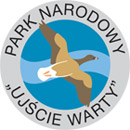You can return to the map of European sites by clicking here, or select a site from the list in the left menu.
Saison 2025/2026
Parc National Ujscie Warty
Information : Arkadiusz Broniarek, Konrad Wypychowski
| Date | Nombre |
| 20/11/2025 | 5 816 |
| 30/10/2025 | 9 908 |
| 10/10/2025 | 21 082 |
| 25/09/2025 | 8 057 |
| 15/09/2025 | 9 117 |
| 08/09/2025 | 7 894 |
Saison 2024/2025
Parc National Ujscie Warty
Information : Arkadiusz Broniarek, Konrad Wypychowski
| Date | Nombre |
| 14/10/2024 | 7 687 |
| 20/09/2024 | 14 665 |
Saison 2023/2024
Parc National Ujscie Warty
Information : Arkadiusz Broniarek, Konrad Wypychowski
| Date | Nombre |
| 20/01/2024 | 26 |
| 5/01/2024 | 2 |
| ------ | ------ |
| 18/12/2023 | 490 |
| 05/12/2023 | 66 |
| 24/11/2023 | 3 326 |
| 12/11/2023 | 17 242 |
| 03/11/2023 | 7 575 |
| 19/10/2023 | 19 513 |
| 10/10/2023 | 17 947 |
| 28/09/2023 | 11 745 |
| 19/09/2023 | 16 094 |
 Warta Mouth National Park Warta Mouth National Park is situated in the west of Poland, near the German border.
Warta Mouth National Park Warta Mouth National Park is situated in the west of Poland, near the German border.
The Warta river which flows in the middle of the park is a natural separation between the north polder and floodplains to the south.
The park is a mosaic of meadows, pasture and marshes invaded by rushes and reeds.
 More than 270 bird species have been recorded so far in the Warta Mouth National Park, of which 170 are nesting species. Several are on the Polish Red List of Threatened Birds : Little Bittern (Ixobrychus minutus), Shelduck (Tadorna tadorna), Common Teal (Anas crecca), Little Gull (Larus minutus), Eurasian Curlew (Numenius arquata).
More than 270 bird species have been recorded so far in the Warta Mouth National Park, of which 170 are nesting species. Several are on the Polish Red List of Threatened Birds : Little Bittern (Ixobrychus minutus), Shelduck (Tadorna tadorna), Common Teal (Anas crecca), Little Gull (Larus minutus), Eurasian Curlew (Numenius arquata).
Many of the species that live in the park are listed under the EU Birds Directive : nesting species such as Eurasian Bittern (Botaurus stellaris), Grey-backed Night-heron (Nycticorax nycticorax), Corncrake (Crex crex), Spotted Crake (Porzana porzana), Black Tern (Chlidonias niger), Little Tern (Sterna albifrons), Aquatic Warbler (Acrocephalus paludicola).
Golden Plover (Pluvialis apricaria) and Hen Harrier (Circus cyaneus) can be seen on migration and Whooper Swan (Cygnus cygnus) and Bewick’s Swan (Cygnus columbianus) are present in winter.
The park is of a great importance for staging and wintering birds such as Wood Sandpiper (Tringa glareola), Spotted Redshank (Trinage erythropus), Ruff (Philomachus pugnax). In winter, it is the « Geese kingdom » as between 60,000 and 80,000 geese (and sometimes up to 200,000) can stay there. The Bean Goose (Anser fabalis) which is the most numerous of the arctic species is the emblem of the park.
The park is also a wintering place of critical importance for many species such as Whooper and Mute Swans (Cygnus cygnus and C. olor) and White-tailed Sea-eagle (Haliaetus albicilla).
There are few places in Poland where it is possible to find such a variety of birds and also so many birds . On some days, up to 250,000 birds can be seen in this Ramsar site